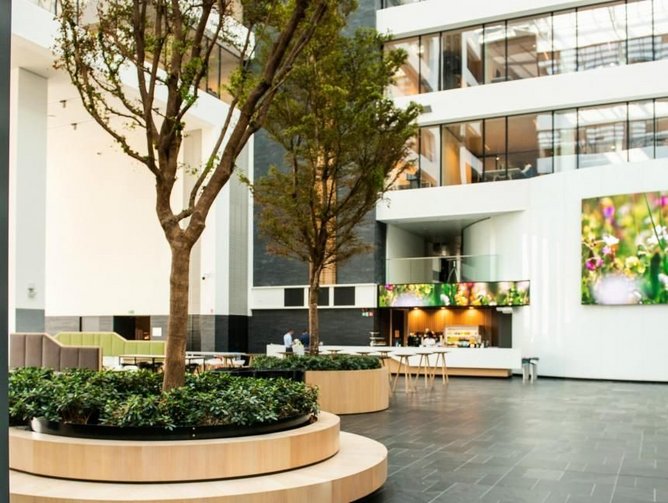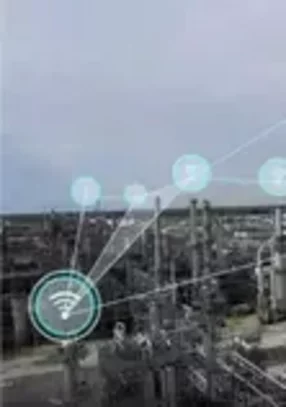Deloitte Belgium: cognitive technology in client supply chains
From the invention of the steam engine and new ironworking processes to the microchip and the nuclear reactor, the first three industrial revolutions have each recast the world in a new mould. Now, as the world plunges into a fourth transformation, driven by disruptive technologies, hyper-connectivity and customer-centric new business models, looking back across the past 260 years can grant valuable direction into the shape of tomorrow. The trends defining Industry 4.0 are reflected in the impetus that fuelled the First Industrial Revolution at the close of the 18th century: harnessing new innovations in order to increasingly improve and automate the work carried out by human labour.
Previously, digitisation was a process that focused on automating manual tasks, “transactions” if you will, but according to Kevin Overdulve, Director in Supply Chain & Network Operations at Deloitte Belgium, technological advances are on track to take automation to the next stage. “Since the beginning of the 1990s, we’ve seen companies explore the realm of transactional automation, which led to the increased adoption of Enterprise Resource Planning (ERP) systems, basically to do the things that human beings were doing on a piece of paper, but then better, faster and more cost-effective,” he says. “Now, we’re seeing a shift towards cognitive automation leveraging artificial intelligence (AI), where today’s human decision-making processes are automated.”
Ultimately, Overdulve sees this trend resulting in the genesis of the autonomous digital supply network, whereby the siloed supply chain functions of today will evolve towards a network of connections between plan, source, make and deliver, as well as adjacent business functions, all enabled by a digital core. We sat down with him to discuss this evolution: “We see that companies are moving much more towards figuring out how to make their supply network an integral part of their value proposition to customers, by taking a differentiated approach towards new ways of competitive advantage,” he notes.
Overdulve’s fascination with the delicate interplay of factors in the modern supply network began years before his career at Deloitte Belgium. He recalls being captivated while walking around warehouses and visiting harbours, observing how goods flowed in coordinated (or not so coordinated) ways from A to B. Always on the leading edge of optimisation and innovation, the dynamic world of consulting had Overdulve hooked from the start, quickly realising that his passion resides in supply chain management. “There's no one-size-fits-all answer to finding the right supply chain for a company, because it's so dependent on business strategy and choice of differentiation,” he explains. “Because supply chains are complex systems in which optimisation across all angles is a true challenge – if even possible - you typically need to look into making several trade-offs – ‘do you prefer to hold onto stock to maximise operational efficiencies or do you follow a lean, small batch approach? Do you value service at additional supply chain cost? How do we choose what we want our supply chain to look like?’ That complexity was very interesting to me.”
Helping Deloitte’s customers navigate that complexity is at the heart of Overdulve’s current role, a quest he believes is fundamentally guided by the need to put the customer at the epicentre of the question. “For a lot of companies, their supply chain is the final connection point to the customer,” he points out. “What I find intriguing is the idea that, instead of taking a ‘push’ perspective from a supply chain point of view and saying ‘this is our supply chain, these are our capabilities: this is the service we offer our customers’, we advise clients on how to adopt more of a pull perspective and listen to the customer’s needs and wants.”
By listening to what Deloitte’s clients’ customers truly value in the supply chain service they receive, which eventually drives (part of) their buying decision, Overdulve maintains companies can tune and reconfigure their supply chains – plural – in order to turn it into a source of competitive advantage. He notes that, with increasingly demanding customers, there are three major conclusions from the customer studies performed by Deloitte across several industries: “In a lot of the B2B, or B2B2C environments, reliability is really the number one service expectation and, if you can excel at that, it really gives you a competitive edge; the second one is flexibility, with customers wanting to be able to change orders or service requirements depending on the situation at hand; and the third one is the visibility and transparency element.” This visibility component is not only a customer demand. For most of Deloitte’s clients it is a key enabler to gain greater insight in the way how their supply chain actually operates, giving rise to opportunities related to efficiency, rapid responsiveness and lower amounts of capital employed.
Digital transformation is supporting all three of these observations, but particularly the third factor. Adding the AI component to the equation, the ability to analyse and create actionable insights from disparate and sizeable data sets drives a new wave of designing, planning and operating the supply network of tomorrow. Overdulve sees AI as an enabler of a future where the supply network ceases to be a linear, siloed, one size fits all structure, and becomes an interconnected, collaborative, customer-centric, and above all responsive network running across an industry’s value chain.
“Where I see major advances at this point in time is clients having established the ability to retrieve real-time data from internal and external source systems, to provide user-centric visibility and the ability to identify exceptions at the spot, and to offer supply chain improvement suggestions to supply chain professionals – which improve over time as machine learning helps to perfect courses of action to avoid the negative consequences of supply chain deviations, eventually enabling an autonomous supply chain function,” Overdulve explains. “ERPs tend to be set up in a customised manner, creating hundreds of reports to manage execution, still transactional in nature, with supply chain professionals needing to plough their way through them in order to gain insights. By the time the insight, let alone the remediation action to be undertaken, is found you're most likely too late and the negative effect of the disruption has already happened.”
Overdulve believes in platform technologies that combine crawler technology – extracting and indexing large supply chain data sets to build your company’s supply network “memory” – and the power of AI – breaking silos in favour of the best supply chain response to exceptions – to augment the supply chain workforce of the future. “Let’s take the robot out of the human and allow supply chain professionals to focus on value-adding activities,” he says. “It’s the reason I’m working alongside several promising start-ups, which are developing technology I believe does this very well, making real-time copies of our company’s data, which is constantly and incrementally updated to ensure a supply chain professional can receive always retrieve the most current visibility on supply chain operations.”
Of course, applying cutting-edge technology with a modern, digital transformation mindset means adopting an approach that is at odds with those that businesses have traditionally employed. “At Deloitte, our tagline on how to do digital transformation is to ‘think big, start small and scale fast’,” Overdulve explains. “It's a different mentality compared to the waterfall mentality that was prevalent before. Previously, when you went through large scale-supply chain transformations, you went off for a year to design the solution, then two years to build it, another year to test it. Then, four or five years later, it actually went live. By the time you put it live, everything has changed so much that you might wonder whether the solution is even still relevant.” Deloitte’s approach to digital innovation, in a world that is changing at an increasing pace, is much more agile, acknowledging the lessons learned from failure and the need for rapid adoption and adaptation. “The ‘think big’ phase is about envisioning the art of the possible of what a company’s future supply network could look like, which technologies it needs to explore to realise this vision and which are the most apparent supply chain areas to tackle in light of continuous business challenges. We create a constantly evolving roadmap for the company. Then, the ‘start small’ element involves us solving a specific business issue, rather than trying to boil the ocean. We take one of the core use cases that could drive benefit for a company, we match that with the right technology to solve the challenge, and we do a pilot. Finally, the ‘scale fast’ part is about finding other areas where the solution prototype can be leveraged to create momentum at scale and start expanding the technology for adoption across the company.”
Overdulve sees AI as the defining characteristic of the supply networks of the future. “It’s completely changing the way we can manage supply chains in the realm of moving towards autonomous supply networks,” he explains. He further argues that “the autonomous supply network trend has the ability to turn how we define supply chain, or network, upside down. Do you still need periodic planning capabilities if your supply network self-regulates itself? Which organization and skills are needed to operate the autonomous supply network?
“I have two top priorities right now: one is helping companies understand the potential of cognitive automation and available technologies in the supply network, to help them gradually enter the world of the cognitive – and by extension autonomous – supply network. I think that's probably the biggest thing that will happen in the next couple of years in terms of transformation in my field of expertise. The second is more around strategic supply chain design, and how you evaluate different supply chain archetypes in light of continuously evolving customer needs.” To maximise the benefits of the Fourth Industrial Revolution, companies will need to not only make the most of the emerging technologies in the field, but to explore, identify and adopt the new attitudes and methodologies that will allow them to remain agile and thrive in an ecosystem that changes more rapidly with each passing day.











